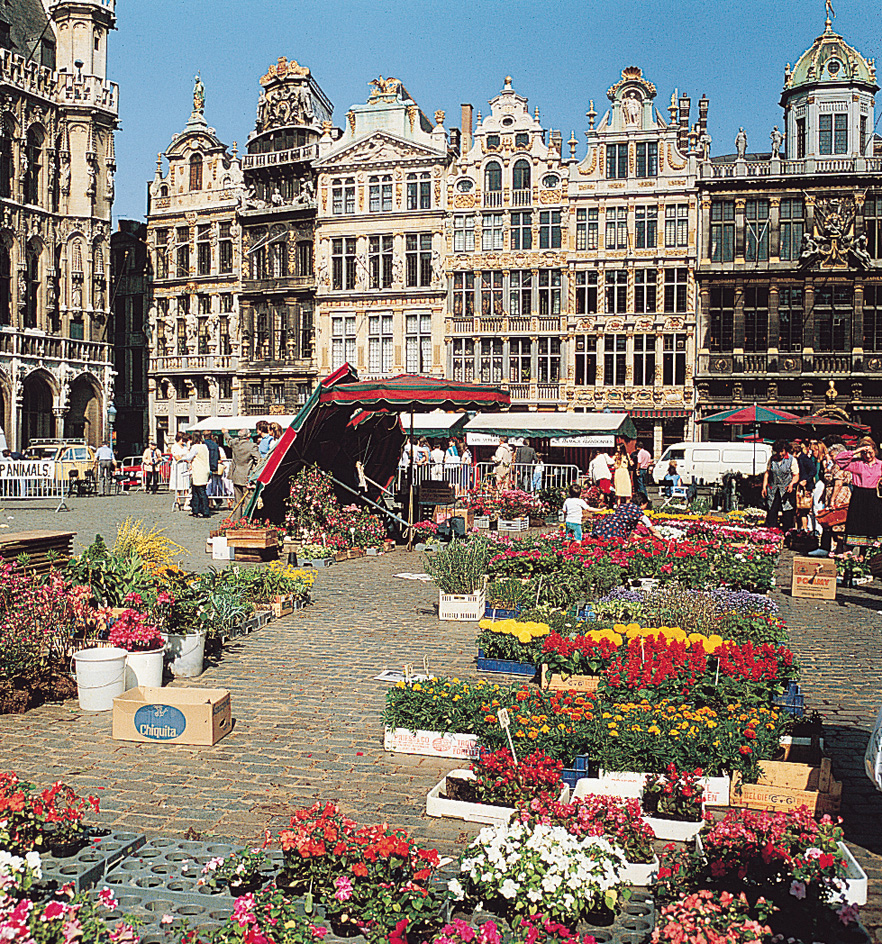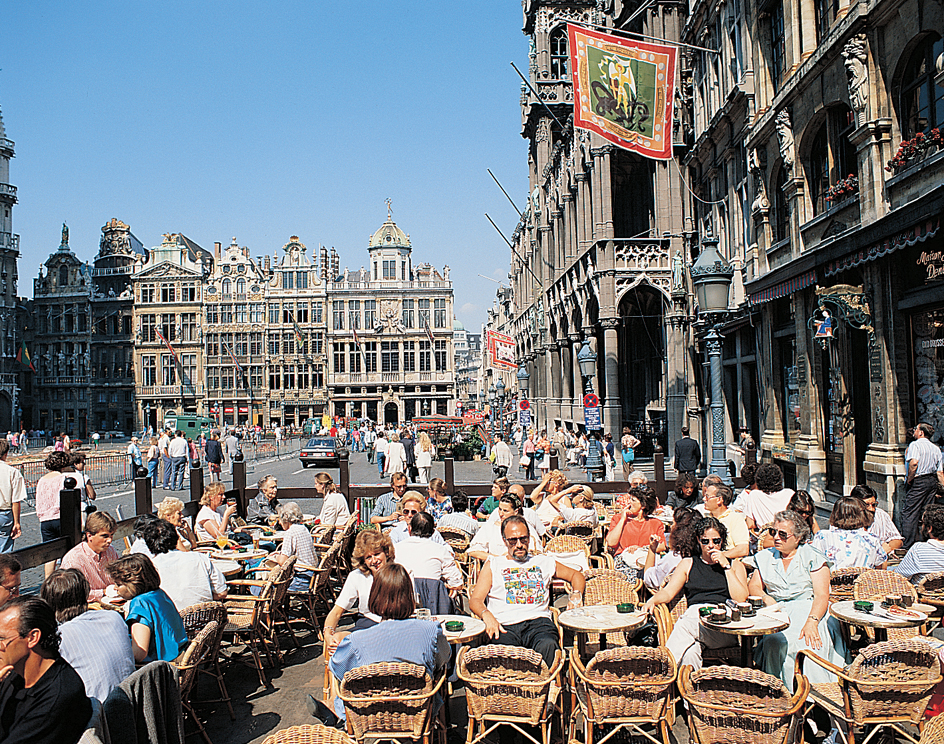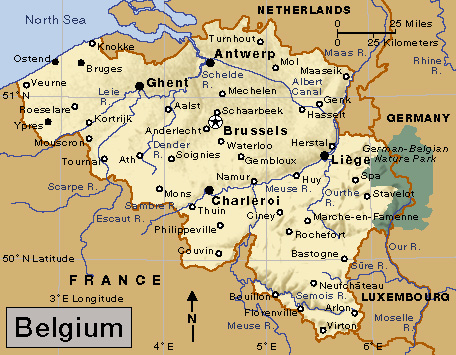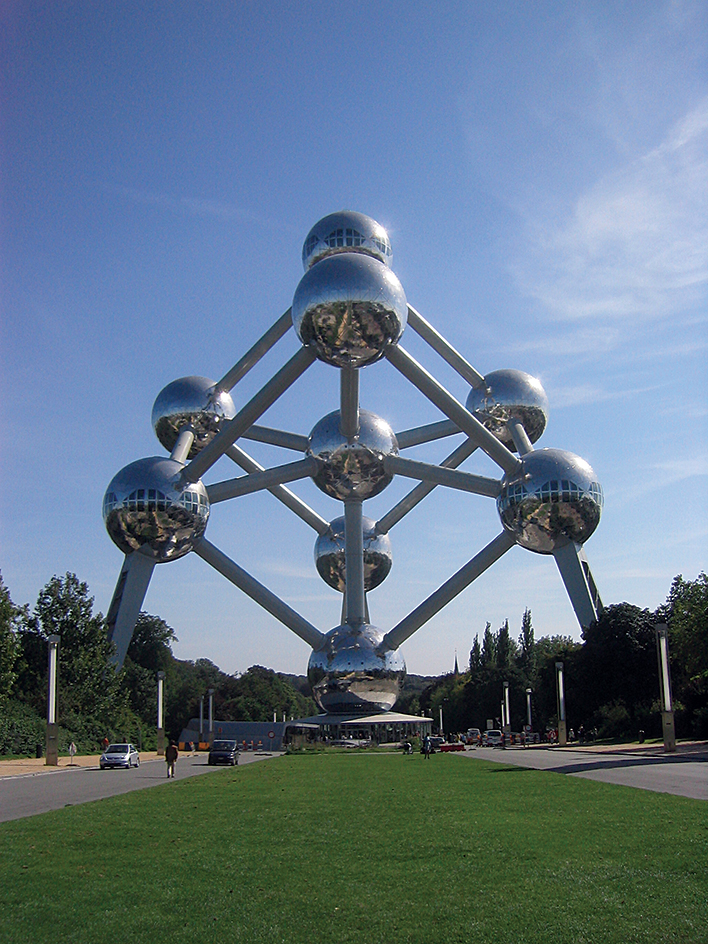Brussels (pop. 175,534) is the capital of Belgium. Brussels ranks as the nation’s fifth largest city, but the metropolitan area (including the suburbs) is the country’s largest. Brussels is a center of international economic and political activity. Several international organizations, including the European Union (EU) and the North Atlantic Treaty Organization (NATO), have headquarters in or near the city.

Metropolitan Brussels is officially a bilingual (two-language) area. Both Dutch and French, the two official languages of Belgium, are used for education and public communication. However, French is the everyday language of most of the people. The city is called Brussel in Dutch and Bruxelles in French.
The city
is heart-shaped, with the oldest section, called the lower city, in the center. The lower city includes the Grand’ Place (or Grand-Place), the main square of Brussels. The square is bordered by elaborately decorated buildings constructed during the 1600’s to house merchant and craft guilds (associations). Brussels’ town hall, which dates from the 1400’s, also faces the square. East of the lower city is the upper city, which has many important buildings erected during the 1800’s and early 1900’s. It includes the royal palace, the parliament and other government buildings, and elegant residential neighborhoods. Modern neighborhoods and suburbs also surround the upper and lower cities. 

The Free University of Brussels is actually two institutions, one for French-speaking students and the other for those who speak Dutch. Cultural attractions in Brussels include the Museum of Fine Arts, the Museum of Modern Art, the Museum of Natural History, and the Albert I Library. The Theatre de la Monnaie offers performances of operas and ballets.
Economy.
Brussels is the center of Belgium’s banking, insurance, and transportation industries. Many of its people work for the government or for agencies of the European Union. Products of Brussels include ceramics, chemicals, drugs, processed foods, paper, and textiles. Brussels is a crossroads on the European railroad and highway networks. Zaventem, an international airport, serves the city. 
History.
Historians do not know when Brussels was founded. By the A.D. 900’s, however, the city had become an important stopping point on trade routes linking western Germany and northern France. For centuries, Brussels was part of empires controlled by foreign rulers, including the Burgundians, Spaniards, Austrians, French, and Dutch. It became the capital of Belgium when the country gained independence in 1830. German troops occupied Brussels during World War I (1914-1918) and again during World War II (1939-1945), but the city suffered little damage either time.

Relations between Dutch-speaking and French-speaking Belgians have been tense throughout Belgium since the late 1800’s. The bitterness increased after World War II (see Belgium (History)). From 1967 to 1971, Belgium changed its constitution in an effort to deal with the country’s language problem. The revised constitution made the Brussels metropolitan area a bilingual area. The constitution also divided Belgium into three economic regions, of which metropolitan Brussels is one.
In March 2016, terrorist bombings killed 32 people and injured more than 250 others at Brussels’s Zaventem airport and in the Maelbeek metro (subway) station. In July 2023, eight men associated with the Islamic State, a radical militant Islamic group, were found guilty of planning the attacks. Seven of the men were sentenced to prison terms in September. The eighth man had previously received lengthy sentences from two other convictions and so did not receive a new sentence for his role in the 2016 bombings.
